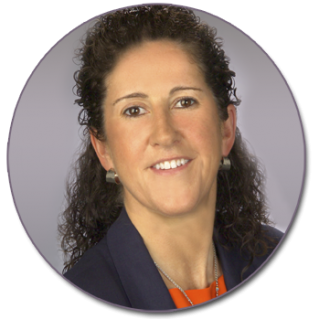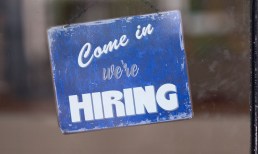Changing the Game of Credit Scoring

For 17 years, there was only one game in town when it came to credit scoring. Now that other models have entered the space, the market has expanded to present a wider range of options for both lenders and consumers – and with those options come benefits as well as challenges. PYMNTS recently spoke with Sarah Davies, Senior Vice President, Analytics, Product Management and Research at VantageScore, who shared her thoughts on the “sea change” in the scoring and lending industry.
Eight years ago, VantageScore introduced competition into a market that had to that point been dominated by single brand – FICO. What’s unique about the company, both then and now, according to Sarah Davies, Senior Vice President of Analytics, Product Management and Research at VantageScore, is that “in building the model, [the company] set out to score as many consumers as [it] possibly could.”
Toward that goal, VantageScore developed scorecards within the overall model that looked at consumers who had sparse credit files: those who, because they had less conventional data and fewer accounts than the average, were not typically scored by traditional models. Early on, VantageScore put its efforts toward ensuring that those types of consumers could be scored effectively and accurately.
Another element that makes VantageScore unique is that its scoring algorithm is identical at all three bureaus. Standardizing the data provides inherent value for lenders – who as a result face less risk variance when evaluating multiple scores – as well as consumers, who are alleviated of confusion.
“The most profound unique feature,” says Davies of VantageScore, “is [the] fact that we exist.” That made sound a little silly, she admits, but the fact that there was only one player in town before the company came along does carry weight.
While acknowledging that VantageScore’s goal is similar to that of any credit scorer – to be highly predictive – Davies highlights the importance of the company’s value proposition in conjunction with that.
“Our commitment to the industry,” she states, “is that we will continue to update the model and make it as accurate and robust as possible. That shifts the industry from being a single model play to one that has multiple scores, more choice, and a more competitive environment forcing developers to continually enhance the models – which benefits the lending landscape and obviously the consumers. It’s creating a sea change in the scoring and lending industry.”
As part of this sea change, efforts must be made to ensure that the large number of Americans currently frozen out of the credit market because they’re categorized as unscoreable don’t get pushed further to the wayside.
If a lender is attempting to score those customers without using a model that has been specifically designed to address sparser data sets, says Davies, it’s getting off on the wrong foot.
“If I’m looking at it from a lending side,” she says, “I’m thinking about how I can offer the consumer a product – such as a secured credit card, or an installment loan that has collateral attached – that is risk-managed but at the same time allows the consumer to begin to build up a credit file at the bureau and become scoreable.”
As for how the market has reacted to VantageScore, Davies says, “it’s been an interesting journey,” noting that in the eight years that VantageScore has been in existence, 49 versions of the FICO model – formerly the one-and-only model – have joined the market.
Davies credits the “tremendous receptivity” that VantageScore has been met with in large part due to the fact that the company has widened the availability of credit scoring for more people. She adds that the company’s commitment to accuracy and to updating the model have also led to “a number of lenders embrac[ing] VantageScore.”
A big test for VantageScore, according to Davies, was the recession – and it’s one that she’s proud to say it passed with flying colors.
“We’ve now got eight years’ worth of a track record on that,” she says, pointing out that more than 3 billion Vantage scores were used last year for decision-making, testing, and analysis.
As VantageScore continues to “mak[e] strides in the right direction,” Davies notes that a growing trend is that credit card issuers are providing credit scores to their customers.
“It’s an interesting trend,” she says, representative of a larger byproduct of the recession – that being a desire to better understand the complexities of the financial industry, and therefore credit scores.
The concern Davies has is that consumers understand that the score they’re seeing even on their statement is not necessarily the score that’s being used as part of any decision on their other accounts and for other transactions.
“They need to view it as sort of an adjective describing their creditworthiness,” she recommends, “as opposed to the absolute score.”
Davies adds that credit consumers “need to be aware of the fact that there could be some confusion. If I get my score on a statement from one card provider and it’s different than a score from a different provider, what do I do with all of that?
What is of primary importance to this issue, says Davies, is that lenders must focus on the need for consumers to be properly educated about the myriad complexities of credit scoring and provide sufficient transparency if they choose to provide credit scores. Lenders who enter that field “need to ensure that consumers actually understand what they’re being told,” says Davies.
Looking to the future of credit scoring, Davies says that one of the things she’s most excited about is alternative data – specifically, its potential impact on the industry as it continues to become more robust.
“There are a fair number of nuances and complexities with using it,” she notes, “but I think, at the end of the day, incorporating other streams of data – like rent, utility, telco data – into more of these foundational models will ensure that everybody gets a credit file at the bureaus and can be accurately scored.”
As for VantageScore’s role in the future, Davies says that it will continue in its existing mission to provide lenders with options in scoring models, ones that emphasize transparency and are consistently updated so as to be as predictive as technology will allow.
“Risk needs to be managed and kept transparent. And competition needs to flourish,” concludes Davies. “Without that, I see the scoring industry becoming slow to respond again.”

Sarah Davies
SVP Product Mgmt & Analytics at VantageScore Solutions
Sarah Davies is senior vice president of analytics, research and product management at VantageScore Solutions LLC, a company owned by the three national credit reporting companies (Equifax, Experian and TransUnion) to provide credit grantors a highly predictive, universal credit scoring model. As the leader of the team responsible for developing VantageScore Solutions’ credit scoring models, Davies and her team are credited with a number of important industry break-throughs such as a “scorecard” designed specifically to deliver a highly accurate credit score to those with sparse credit histories, and the elimination of paid third-party collection accounts.
In addition to leading the product strategy, she engages with numerous government regulatory agencies and the secondary market to provide insights on consumer financial trends, credit and risk analytics. She is recognized as a national expert on credit scoring technologies, model governance, decision-analytics and is a frequent speaker to the financial service industry and the media on these topics.
She has nearly 25 years of leadership experience in strategy, analytics and information sciences in the financial service industry. Prior to joining VantageScore Solutions, she served as Chief Analytic Officer for iQor Holdings Incorporate, a global customer service and receivables management outsourcing business.



